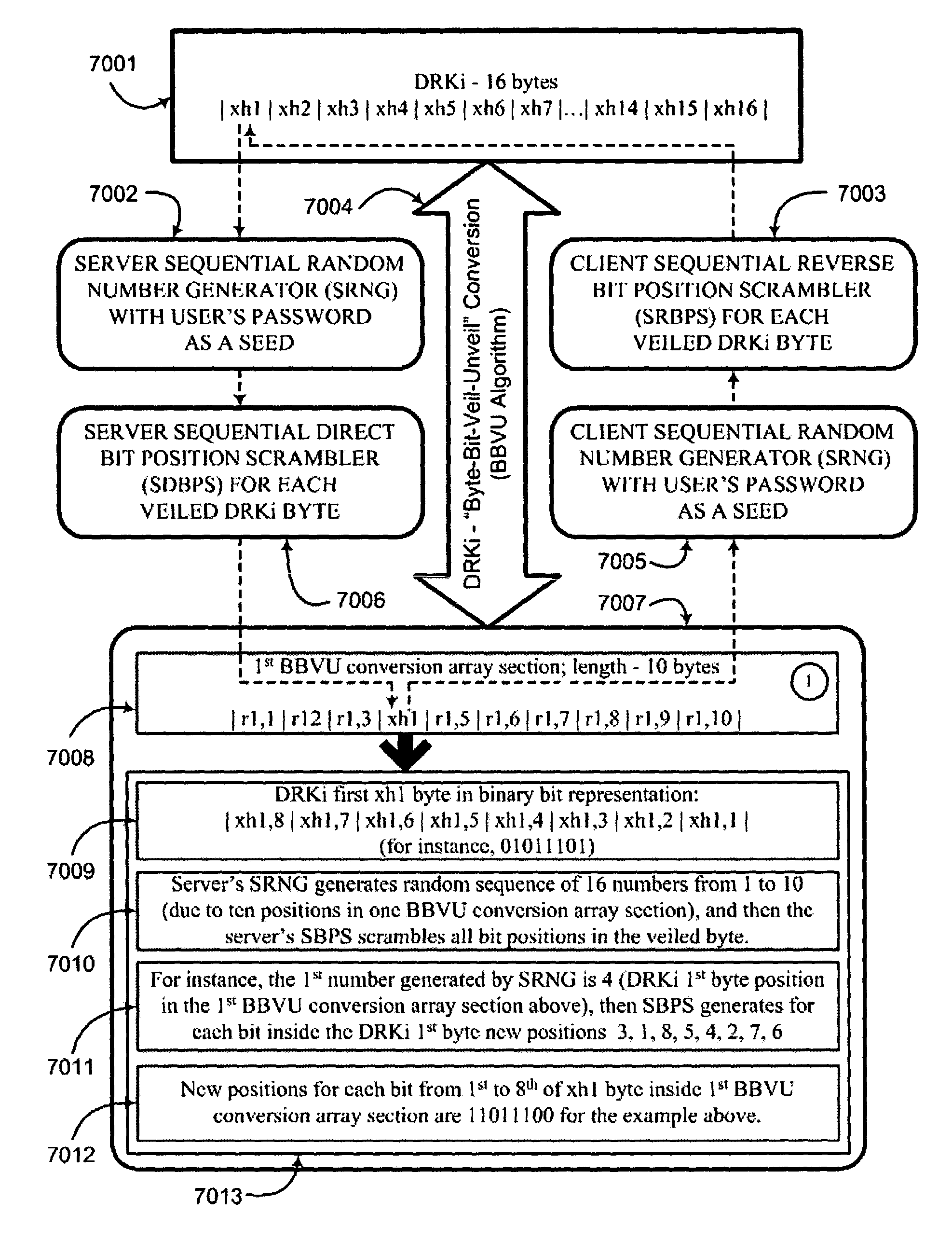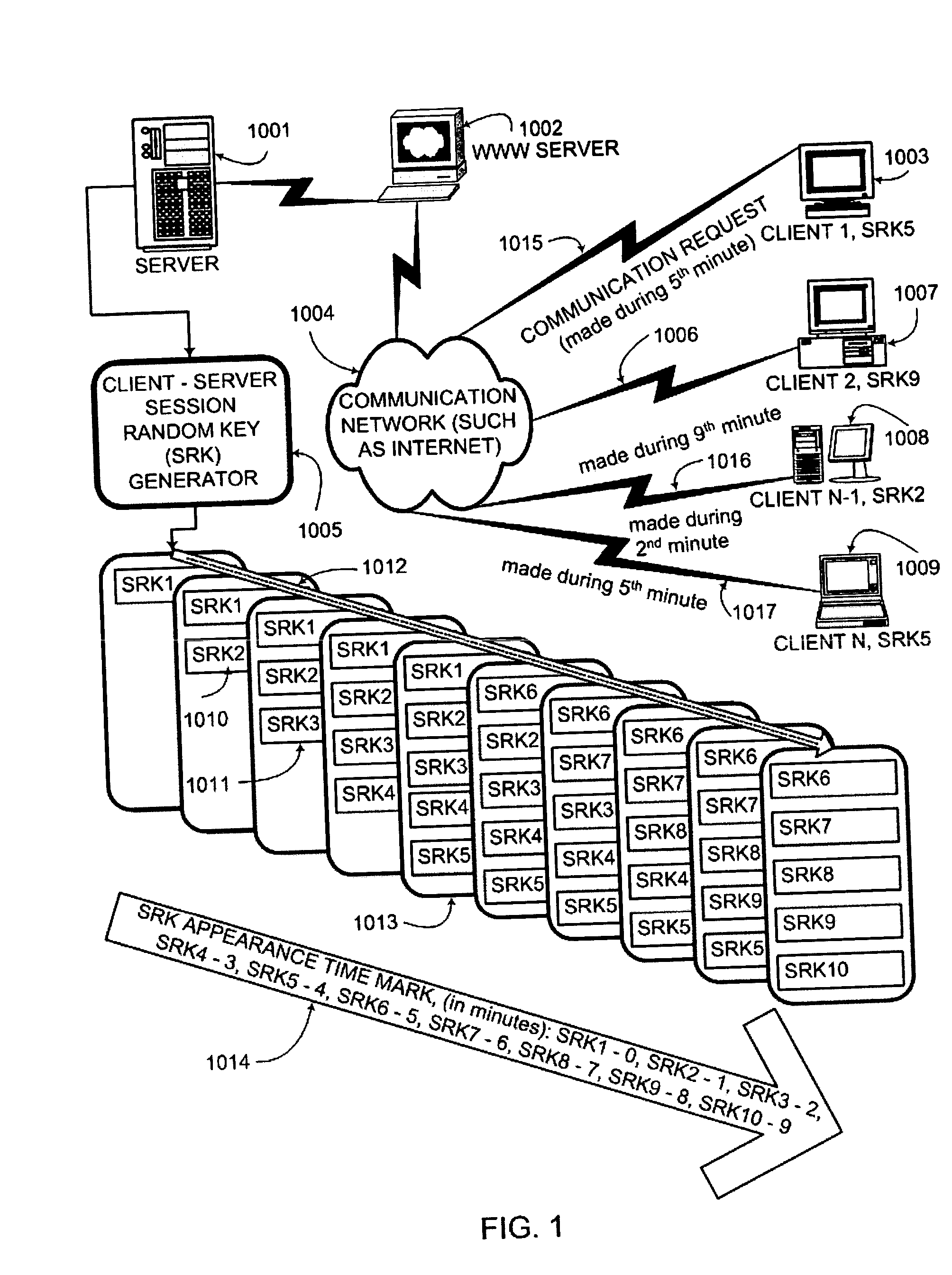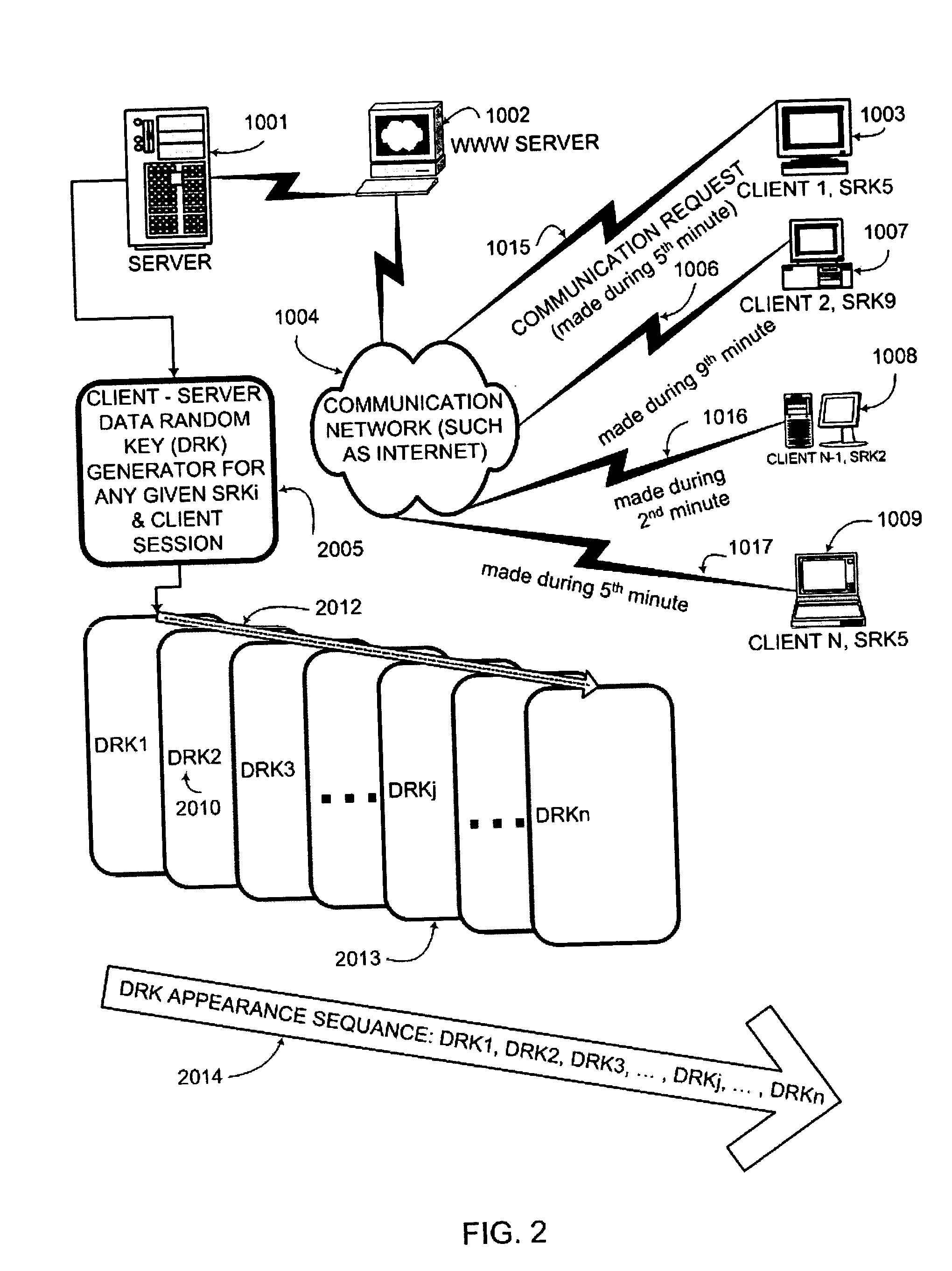Key conversion method for communication session encryption and authentication system
a key conversion and communication session technology, applied in the field of authentication and data transmission security, can solve the problems of reducing the progress of applying network technology to certain areas, affecting the security of passwords, and increasing direct economic losses for enterprises and individual consumers
- Summary
- Abstract
- Description
- Claims
- Application Information
AI Technical Summary
Benefits of technology
Problems solved by technology
Method used
Image
Examples
Embodiment Construction
[0038] According to the present invention, there are shared secrets (several secrets are needed in strong authentication cases and also in a case of mutual authentication) between two parties attempting to establish trust over untrusted electronic communication media. Shared secrets are usually established during an account open procedure. Though the server password could be shared by the plurality of users, it is assumed, without sacrificing any generality of the disclosed authentication protocol, that the preferred embodiment of this invention is to provide a unique server password for each user. Account set / reset online automated utilities would greatly facilitate establishing uniquely personalized server and user passwords. Client / server or d2d (authenticator / peer) communication sessions would be typical cases, though the client / server protocol would remain the preferred embodiment. There are no limitations on the nature of the shared secrets used. They could be “what user knows...
PUM
 Login to View More
Login to View More Abstract
Description
Claims
Application Information
 Login to View More
Login to View More - R&D
- Intellectual Property
- Life Sciences
- Materials
- Tech Scout
- Unparalleled Data Quality
- Higher Quality Content
- 60% Fewer Hallucinations
Browse by: Latest US Patents, China's latest patents, Technical Efficacy Thesaurus, Application Domain, Technology Topic, Popular Technical Reports.
© 2025 PatSnap. All rights reserved.Legal|Privacy policy|Modern Slavery Act Transparency Statement|Sitemap|About US| Contact US: help@patsnap.com



